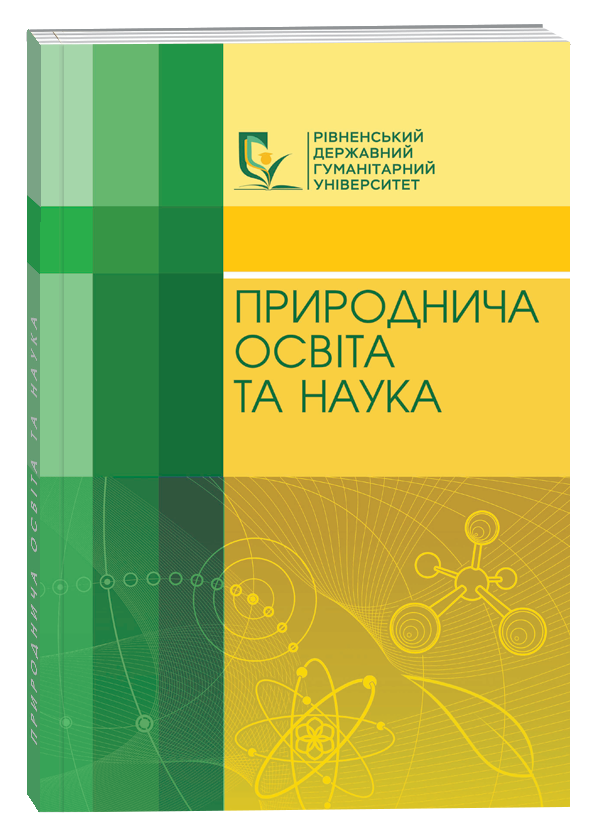DETERMINING THE ECOLOGICAL FOOTPRINT OF HIGHER EDUCATION PROVIDERS DURING WARTIME
Abstract
Preservation of the natural environment is a key aspect of Ukraine’s policy. This is not only a matter of the environmental sector, but also of the economy, social stability and public health. It is also extremely important to involve the community in discussing environmental issues and provide environmental education. This creates conditions for sustainable development and well-being of current and future generations. The purpose of the article is to determine the ecological footprint of higher education students during the wartime period. The article examines the impact of students on the natural environment and the causes of this phenomenon. Students of higher education majoring in 017 “Physical Culture and Sports” (educational and professional program “Physical Culture and Sports Rehabilitation”), who studied at the 1st year of the Petro Mohyla Black Sea National University, took part in the survey. All students passed the test to calculate the ecological footprint, that is, their individual load on the environment. Based on the results of the analysis, it was found that students have a fairly wide range of ecological footprint values – from 1,73 ha to 7,07 ha. In particular, the average value of this indicator was 3,47±1,68 ha. A comparative analysis of the burden of higher education applicants on the environment with the values of the corresponding indicator in Ukraine and some countries of the world with different economic development for 2019 and 2022 was also carried out (the value is predicted by the Global Footprint Network). In particular, a correlation and regression analysis was carried out, which confirmed the possibility of predicting the results of the size of the ecological footprint depending on the age aspect of those obtaining higher education. Thus, a close correlation was observed between the specified parameters (r = 0,744; р ≤ 0,05). So, as a result of the conducted testing to determine the ecological footprint, it was established that higher education graduates have different levels of impact on the environment. This test gives an opportunity to think for acquirers with a high value of the ecological footprint about the possible need to adjust their usual lifestyle, which will contribute to reducing the impact on the surrounding natural environment.
References
2. Верстяк А. В. Екологічний слід у дослідженнях еколого-економічної конвергенції країн/регіонів: критичний аналіз наукових джерел. Вісник Одеського національного університету ім. І. І. Мечникова. 2021. Т. 26. № 86. С. 104–109.
3. Григор’єв К. В., Алексєєва А. О., Макарова О. В., Григор’єва Л. І. Оцінка показників радіоекологічного стану водойм за екосистемним принципом безпеки. Екологічні науки. 2023. № 2 (47). С. 130–136.
4. Губарєва В. Підрив Каховської ГЕС. Якими будуть наслідки для довкілля? Ukraine War Environmental Consequences Work Group: [сайт]. 2023. Вип. 14. URL: https://uwecworkgroup.info/uk/explosion-ofthe-kakhovkahydropower-plant-what-are-the-environmentalconsequences/ (дата звернення: 24.10.2024).
5. Екологічний слід. URL: https://mvk.if.ua/energef/28408 (дата звернення: 23.10.2024).
6. Екологічний слід – калькулятор ресурсів для ваших потреб. URL: http://eko-front.blogspot.com/2012/01/blogpost_23.html (дата звернення: 20.10.2024).
7. «Екологічний слід» українця становить 3,1 га. URL: https://tyzhden.ua/ekolohichnyj-slid-ukraintsiastanovyt-3-1-ha/ (дата звернення: 24.10.2024).
8. Іщенко В. «Бомба уповільненої дії». Як за рік великої війни погіршилася екологічна ситуація в Україні. Новини Донбасу. 2 березня 2023 р. URL: https://novosti.dn.ua/article/8376-bomba-upovilnenoyi-diyi-yak-za-rik-velykoyivijny-pogirshylasya-ekologichna-sytuatsiya-v-ukrayini# (дата звернення: 23.10.2024).
9. Каленська В. П., Любченко В. В. Зелений готельний бізнес: екологічна відповідальність. Індустрія туризму і гостинності в Центральній та Східній Європі. 2023. № 9. С. 30–37. URL: http://journals-lute.lviv.ua/index.php/tourism/article/view/1459/1373 (дата звернення: 20.10.2024).
10. Калькулятор екологічного сліду. URL: https://livingplanet.org.ua/en/projects/kalkulyator-ekologichnogo-slidu (дата звернення: 23.10.2024).
11. Козачок А. Вплив війни на навколишнє середовище. Співчуття у фермерстві: [сайт]. 4 серпня 2022 р. URL: https://ciwf.in.ua/?p=3507 (дата звернення: 20.10.2024).
12. Колодежна В. Ґрунтові метаморфози: українське дослідження впливу війни на ґрунти. Ukraine War Environmental Consequences Work Group: [сайт]. 2023. Вип. 13. URL: https://uwecworkgroup.info/uk/soilmetamorphosisukrainian-study-of-war-impacts-on-soils/ (дата звернення: 20.10.2024).
13. Лазуткін М. І., Журавель С. М., Журавель М. О. Екологічна безпека Запорізького регіону як складова безпеки життєдіяльності населення регіону. Екологічні науки. 2022. № 3 (42). С. 217–221.
14. Освіта в інтересах сталого розвитку в Україні. URL: https://ecoosvita.org.ua/calc (дата звернення: 23.10.2024).
15. Пацева І. Г., Барабаш О. В., Мельник-Шамрай В. В., Шамрай В. І., Пацев І. С. Аналіз сучасного стану лісових ресурсів у контексті сталого розвитку. Технології захисту навколишнього середовища. 2023. № 4. С. 205–211.
16. Про Основні засади (стратегію) державної екологічної політики України на період до 2030 року : Закон України від 28.02.2019 № 2697-VIII. URL: https://ips.ligazakon.net/document/t192697?an=13 (дата звернення: 23.10.2024).
17. Пьохов В. М., Пьохова С. В., Шевчук В. В. Актуальні проблеми екологічної небезпеки для України і світу та деякі шляхи їх рішення. Південноукраїнський правничий часопис. 3-2021, Ч. 2. С. 30–35.
18. Що таке екологічний слід і як його визначити? URL: https://v.gd/E1Sg6i (дата звернення: 24.10.2024).
19. Еcological footprint. URL: https://www.britannica.com/science/ecological-footprint (дата звернення: 24.10.2024).
20. Global Footprint Network. Advancing the Science of Sustainability. URL: https://www.footprintnetwork.org/ (дата звернення: 24.10.2024).
21. Shkurat M., Tukila K. The impact of ecology on international economic relations. Економіка та суспільство. 2021. № 26.






